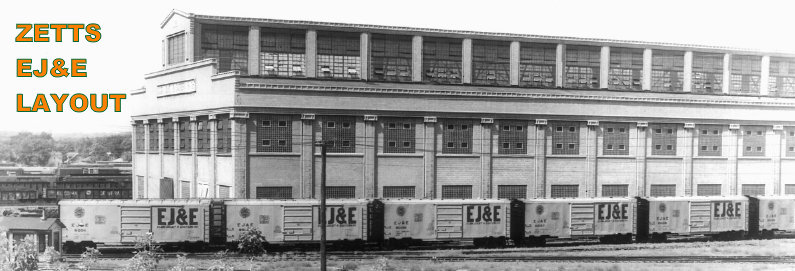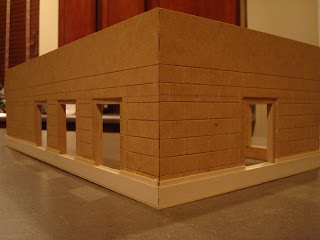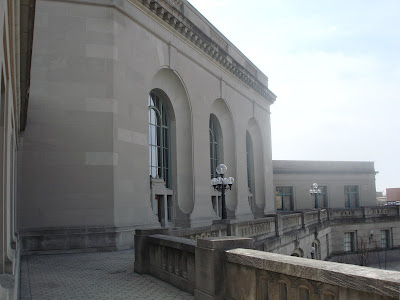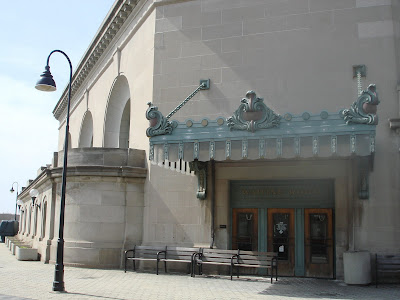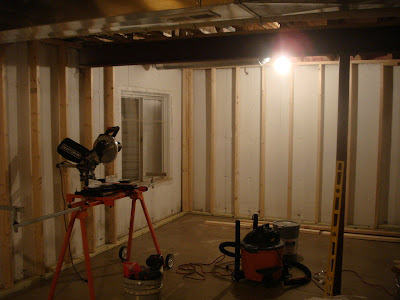You might find it odd that just as I start constructing a semi-scale layout, with an intent on modeling real-life scenes, that my first ever engine purchase is a tinplate locomotive. I sometimes think that is quite odd myself, that is until I put the 255E on the tracks. Shes a beaut!
I didn't plan on collecting tinplate until I saw the 2010 O gauge MTHRRC tinplate car, which I discussed a few months ago. After purchasing the 2009 club car, (as well as anxiously awaiting my 2011 searchlight club car) I knew that this collection belonged underneath the Christmas tree. The 2011 Volume 2 edition of The Crossing Gate, The MTH Railroaders Club Magazine, featured this engine on the cover. After much thought I decided that this is the perfect engine to pull the MTHRRC cars. I am not sure if the Lionel Tinplate Corporation will actually release an engine specifically for these cars, but I decided that the 255E in orange and blue is a perfect match. Don't you agree?
The blue on the engine matches the blue on the cars perfectly, which was a concern when I ordered. Speaking of ordering... may I suggest pre-ordering any piece for your collection that is a "must-have." I decided to purchase this engine in September. It took at least a dozen phone calls to locate this engine with Proto-Sound 2. Actually I ended up calling MTH, and requested a list of the 10 shops that ordered the most of this engine. The last shop on the list, my last call, had 1 in stock. I feel pretty lucky that I was able to get my hands on this engine in brand new condition.
So, I must say so far, my first ever MTH purchase, my first ever tinplate purchase, I am completely impressed. I am running the 255E on O gauge Lionel tubular track with O-42 curves. I am powering the track with my ZW. The extreme slow speed that this engine can consistently crawl at while being operated in conventional mode is astonishing. I do not yet have DCS, and cannot wait to see how it will perform under that control system, but for now, conventional is more than fine.
The sounds are also pretty good. I am very impressed with the idle sounds, which add a lot to the experience of running a model train. I keep hearing that Legacy sounds are the best, but the PS2 sounds get the job done. I am also very happy with the whistle. This is my first steamer with the prototypical 4 chuffs per wheel revolution which adds a lot of realism, especially at slow speeds (which is awesome, even for a tinplate). One of the most impressive features has to be the smoke unit.
This thing will smoke up your house in just a few laps. This is also my first time using Mega-Steam Smoke Fluid and I cannot say enough great things about it. Once the fluid soaks in for a few minutes and you fire up the 255E, the smoke show is a sight to behold.
Another feature I love is the firebox glow light. This is my first time experiencing a lot of these features on an engine I own, because the last steam engine I received was built by Lionel in 1981. Technology sure has come a long way over the years, and brings this hobby to an entirely new level. Some things never change though, like the feeling you get when you set up a family holiday tradition year after year.
Welcome
Sunday, December 11, 2011
Wednesday, November 30, 2011
The Rock Island line at Joliet's Union Station
Sometimes I will look at an old building and just find it fascinating that 100 years ago life went on around that same building just as it does today. It is a completely different time, so many changes to everything, however there the building stands just as it did long ago. History is what makes Joliet special to me. I look at photographs like the ones shown below and can see a world that is familiar to me as it appeared to family members long past. Today if you stand at Joliet's Union Station, there is constant freight traffic moving north/south being pulled by Union Pacific and BNSF diesels. On the east/west tracks you will most likely see a Metra passenger train or a CSX freight train.
Flash back as recent as 62 years and you would see this. A Rock Island Lines 4-8-4 steam engine pulling a freight load eastbound. This shot is taken standing on the south side of the station facing west, looking toward the DesPlaines river. Today only the tracks closest to the platform pavers remains.
Posted above is the Rock Island 4-8-4 #5114 heading west. If you click on the picture above and open the larger version, you can clearly see the bell on the front of the engine swinging away. This picture is taken looking east, standing in roughly the same location described above. The switch tower seen in this picture still stands today, however its future at this time is uncertain.
It is always a treat coming across photographs like this. Special thanks to Lance Wales who gave me permission to repost photographs which are in his collection, original photos by Bruce MacDonald. You can view Lance Wales collection here.
Flash back as recent as 62 years and you would see this. A Rock Island Lines 4-8-4 steam engine pulling a freight load eastbound. This shot is taken standing on the south side of the station facing west, looking toward the DesPlaines river. Today only the tracks closest to the platform pavers remains.
Posted above is the Rock Island 4-8-4 #5114 heading west. If you click on the picture above and open the larger version, you can clearly see the bell on the front of the engine swinging away. This picture is taken looking east, standing in roughly the same location described above. The switch tower seen in this picture still stands today, however its future at this time is uncertain.
It is always a treat coming across photographs like this. Special thanks to Lance Wales who gave me permission to repost photographs which are in his collection, original photos by Bruce MacDonald. You can view Lance Wales collection here.
Sunday, November 27, 2011
The Squeaky Wheel Gets the Oil
I will admit that in all of my years of running trains, usually just at Christmas, I have never oiled an engine or a car. I know, I know, but that is all changing now that I am fully diving into the hobby instead of just walking around in the infant pool. I guess this is a testimate to the quality of product that Lionel produces. Or maybe I am just lucky that the few trains that I do have still roll forward when I apply the power. Anyways, I just got my Christmas tree layout going this week and started to break in my brand new MTH Lionel Corporation Tinplate 255E (amazing engine, some photos and a review will be coming soon). After about 5 minutes of running, one of the tinplate cars began to screech something awful. Comet, my siberian husky, even jumped up and froze in place, with his ears pinned straight back. Needless to say caring for my new purchases is now a priority.
Unlike most people I do read the manuals, but sometimes the BEST answer is not always there. So like everyone else with O gauge trains, I did find the best answers on the O Gauge Railroading forums. As usual, I opened the forum and the exact topic I was going to start was already in a full discussion swing within the top 10 newest posts. So, at the suggestion of the "experts" today I picked up some Labelle 108 Synthetic Oil.
9 bucks for roughly 1/2 fl oz. but it got the job done. I am not sure how expensive or inexpensive this stuff is, but I took some advice taken from Ives1122 who said "I'm going to chime in with a third nomination for Labelle. Regardless of what anyone else may tell you, insist on using the best lubricants for your trains. The peace of mind is well worth any additional costs you may incur over other brands."
Unlike most people I do read the manuals, but sometimes the BEST answer is not always there. So like everyone else with O gauge trains, I did find the best answers on the O Gauge Railroading forums. As usual, I opened the forum and the exact topic I was going to start was already in a full discussion swing within the top 10 newest posts. So, at the suggestion of the "experts" today I picked up some Labelle 108 Synthetic Oil.
9 bucks for roughly 1/2 fl oz. but it got the job done. I am not sure how expensive or inexpensive this stuff is, but I took some advice taken from Ives1122 who said "I'm going to chime in with a third nomination for Labelle. Regardless of what anyone else may tell you, insist on using the best lubricants for your trains. The peace of mind is well worth any additional costs you may incur over other brands."
The oil came with a needle for application which made it really easy to apply.
I placed 1 drop on each axel at each wheel, where shown above. Just like that, no more screeching. Comet is now a much happier assistant and can go back to concentrating on getting his hair all over everything.
As I continue my layout construction and possibly get another engine or two out for the holidays, the first thing I am going to do is make sure to add some fresh oil to each piece. They are probably thirsty for it, even though they are not making any strange noises.
On another note, I am going to make an effort to make some more frequent updates during the upcoming fall, winter, and spring months. I hope you look forward to seeing my progress as much as I look forward to seeing yours!
Sunday, October 30, 2011
Room Construction - Part 2
Construction of the layout room itself pretty much grinded to a halt over the summer, but over the past 2 weeks a lot has been accomplished, mainly thanks to my uncle, father, and father-in-law. The first two pictures show the room just as we started hanging drywall. The bottom two pictures show the room after drywall is complete and the window cover installed.
The ceiling of the room was sprayed with flat black paint. This turned out very nice. Once track lighting is installed the ceiling should almost completely disappear from view. Insulation and framing were completed, and all electrical has been installed. The outlets are 36" above the floor and will be on a GFI circuit. The door to the room as been installed, and greenboard drywall is complete. My father-in-law made a covering for the basement window which is held into place using velcro strips. Once the wall is painted it should blend into the rest of the wall. As of right now the next step is primer and paint. Hopefully I will begin this process within the next week. After that is finished and carpeting is installed, the real fun can begin.
Finally here is a shot of the Union Station project. I have not completed much since the last update, but I did temporarily assemble the walls so I could take some measurements. Overall the station will take up approximately a 4 foot square section of the layout.
Wednesday, October 19, 2011
Union Station Project - Part 4
I have made some decent progress on the station this past week. Finally I have completed most of the intricate work on the street level walls. This area has taken a lot of time, and I am happy that it is over. Below are two quick shots I took showing this area. All that is left to do before paint is work on the decorative keystone pieces that go above the arch top windows and door, and then attach some trim pieces. After paint is complete I can begin installing window details.
I have also begun adding some details to the platform area single story walls. One tricky task was installing the pieces around the window. Making these fit perfectly was almost impossible, so I have some patch work to do. These pieces needed to be installed separately because they are actually in relief from the main walls, and frame the windows. The trim pieces on the bottom of these walls also need some patch work, but turned out quite well. Once I add the decorative trim pieces on top it will be ready for paint.
I expect to make some significant progress on this project as well as the train room itself in the next month. Stay tuned!
I have also begun adding some details to the platform area single story walls. One tricky task was installing the pieces around the window. Making these fit perfectly was almost impossible, so I have some patch work to do. These pieces needed to be installed separately because they are actually in relief from the main walls, and frame the windows. The trim pieces on the bottom of these walls also need some patch work, but turned out quite well. Once I add the decorative trim pieces on top it will be ready for paint.
I expect to make some significant progress on this project as well as the train room itself in the next month. Stay tuned!
Saturday, August 6, 2011
Union Station Project - Part 3
Long overdue update. Work has slowed for the summer, but I have had time lately to make some progress. The project is taking a lot longer than I had thought. It is very hard to cut out windows and make everything as straight as possible. The below pictures show some of the scribe work to make the block detail. All of the block work is to scale and an exact (or close to it) match to the actual building at 1/48 scale.
The first picture is a shot of the side windows to the left of the waiting room large arched windows. The second picture shows the arched top windows that face the passenger platform next to the tracks.
These two pictures show the front entrance to the station which is at ground level. I have to complete cutting the vertical detail pieces above the window and the door, which is very difficult to get just right. Also there is more scribed block work on these pieces, as you can see in the second picture. More decorative pieces go above the center of the door, and window. I have not yet figured out what I will use for those pieces.
This final picture shows an overall shot of the top level of the station. For perspective, the track is Atlas O-72. The caboose is an EJ&E O-27. I am currently finishing the scribe work. The next step will be to add trim and decorative pieces, and start testing paint options.
Wednesday, April 13, 2011
Typical Days of the Past
In the early to mid 1900s, the downtown area of the City of Joliet was filled with people, businesses, and of course steam engines. Before the tracks were elevated, these locomotives passed right through the city on ground level. Back when train service was at its peak in the 1940s, who knows how many engines would storm through downtown each day. Since its construction in 1912, hundreds of thousands of steam engines roared past the Joliet Union Station, a sight that is now rarely seen. The last time a steam engine passed through Joliet, to my knowledge, was September 1992. I was 9 years old, and my dad did not take me out of school to see it. My dad went to see it though, along with my Uncle and Grandfather.
The above posted video was taken by John Rockey, posted with his permission. You can see his webpage at www.railroad-crossing.com This video of the Santa Fe 3571 is rare look at a sight and sound that citizens of Joliet used to experience on a daily basis for over 70 years. In the background you can see the southeast face of the Joliet Union Station.
Tuesday, April 12, 2011
Union Station Project - Part 2
After a half dozen trips to Union Station, and many hours of calculating and sharpening pencils, I have completed the templates for the upper level of the structure. I started by making rough, semi-scale drawings on graph paper. The rough sketches made it easy to fill in measurements I was missing.
I did not realize how many measurements I needed until I began to complete the rough sketches. I found myself wanting to estimate on areas that were either hard to get to, or areas that just did not seem to be important enough to get exactly right. In the end I decided against this and ended up taking measurements for everything,from window trim, to the width and height of every block on the building. Luckily for me, the block pattern in the first two rows repeats itself up the entire height of the building, which makes it easy to calculate the heights of the upper decorative moldings. After I completed the rough sketches, I made scale drawings of each face of the building.
The next step will be to transfer these drawings onto the 1/4" MDF that I will use to make the exterior walls and cut out the window and door locations.
Wednesday, March 30, 2011
Employee's Picnic 1928
Here is a picture taken in the summer of 1928, showing the Elgin Joliet & Eastern Railway 755 2-8-2 Mikado. According the the www.ejearchive.com this locomotive was built by Alco Brooks in 1923.
This is a special picture for my family, showing my great grandfather James McArdle, who was an engineer on the 755. He is shown wearing a white cap in the picture, 6th from the left. At the EJ&E yearly picnic, different divisions of the railway would clean and decorate an engine, that would be entered into a contest. According to a letter my great grandfather wrote, the 755 lost this contest in 1928 to the Gary division engine 748. The contest turned serious in 1929, to which the 755 would emerge victorious (I will share some photographs of the 755 in 1929 in the future). The 755 is seen here pulling passenger cars that carried employee family members for the special occasion. This picture was taken in Plainfield, IL north of the grain elevator which still stands today, just south of route 59. The engine is draped in a patriotic red white and blue. The American Flags at the time had 48 stars, 6 horizontal rows of 8.
This is a special picture for my family, showing my great grandfather James McArdle, who was an engineer on the 755. He is shown wearing a white cap in the picture, 6th from the left. At the EJ&E yearly picnic, different divisions of the railway would clean and decorate an engine, that would be entered into a contest. According to a letter my great grandfather wrote, the 755 lost this contest in 1928 to the Gary division engine 748. The contest turned serious in 1929, to which the 755 would emerge victorious (I will share some photographs of the 755 in 1929 in the future). The 755 is seen here pulling passenger cars that carried employee family members for the special occasion. This picture was taken in Plainfield, IL north of the grain elevator which still stands today, just south of route 59. The engine is draped in a patriotic red white and blue. The American Flags at the time had 48 stars, 6 horizontal rows of 8.
Thursday, March 24, 2011
Union Station Project - Part 1
My first scratchbuild project will be the Joliet Union Station. The Joliet Union Station was constructed in 1911-1912 and was designed by Jarvis Hunt. The structure cost $250,000 to build. The EJ&E Railway only operated on the tracks adjacent to this station for a brief period of time, however the building is a trademark symbol of railroading in Joliet. This fantastic structure will be a large focal point of the layout.
I am completely new to scratchbuilding, especially to a project containing this level of detail. The building will be constructed to O scale (1 layout foot = 48 building feet), so the total length and width of the building will be approximately 3' by 3'. My first step in the project was to visit the station and take measurements, as well as photographs.
After one trip to the structure I have realized how time consuming this project will be, however it will be something to work on while waiting to complete construction on the train room. The walls of the building will be made out of 1/4" MDF. The next step in the process will be to create a scale template of the main walls of the building.
Wednesday, March 2, 2011
MTH Lionel Corporation Tinplate
After looking through the 2011 Lionel Corporation catalog, I decided that I wanted to sign up for the 2011 MTHRRC subscription, which includes one car a year. After joining I called MTH and was able to purchase the 2010 and 2009 club cars. This is my first ever MTH purchase, and tinplate purchase, and I must say that I am blown away. Everything from the packaging down to the finest details on these cars are incredible. So far these are the only two club cars released with the Lionel Corporation paint scheme, and the 2011 club car is scheduled for shipment in April.
The majority of tinplate collectors purchase standard gauge. I decided to stick with O gauge so I can run these on my main layout.
The majority of tinplate collectors purchase standard gauge. I decided to stick with O gauge so I can run these on my main layout.
Saturday, February 19, 2011
Room Construction
Roughly a third of my basement will be dedicated to the train room. The room is roughly 22 feet by 18 feet, with a few obstacles. I have a furnace, water heater, ejector pump, and a support pole to work around, but overall there is more than enough room to make what I hope will be a beautiful layout. As is the case with all model railroaders, no matter how much space you have, you could always use more. Here is a rough overview of the space that will be used for my layout.


Construction on the basement began around a month ago. I am not an expert carpenter, and have never done any framing before, but it is fun work. When I purchased my house my dad applied a seal to the concrete floor, which I highly recommend. Concrete creates dust, even if you don't walk on it. If you seal your floor, it prevents this, which prevents the dust from being sucked into your furnace, and blown into your house. The seal also gives the concrete a shiny finish. Currently the framing is about 65% complete. Here are a few pictures of the current progress as of today.
The pictures make the space look smaller than it really is. The final picture shows an O-72 template on the ground. After framing is complete the next step will be to spray a bug-proofing agent on the concrete walls, then installation of electrical and insulation. So far on this project I have spent less than $200, and that included all lumber (about 60 studs, 9 12 foot 2X4s, and 9 12 foot treated 2X4s), screws, and nails.
Tuesday, February 15, 2011
Introduction
Welcome to my O scale layout blog! Thanks to my father and my Uncle, model railroading has always been a hobby of mine. My father gave me my first steam engine when I was 3 months old for Christmas, and there has been a train under the tree every year since.
Model railroading tends to be a seasonal hobby, unless you actually build your own layout. In the fall of 2010 I finally made the decision to start construction on my own layout. Visiting webpages such as www.ericstrains.com and www.toytrainsontracks.com got my imagination rolling, and definitely fueled my enthusiasm to start my own project.
I also recently discovered the forums at www.ogaugerr.com which is an irreplaceable source of information for the hobby. Here you can see dozens of new pictures added daily of some amazing projects, as well as learning about railroads that are here today, and railroads that were around 100 years ago.
Finally, the ejearchive webpage, and its creator Dave, have given me a vision for my layout, which will be focused on the Elgin Joliet & Eastern Railway. Some amazing historic images that I will share with you are because of the work Dave has completed, to document this history of EJ&E.
That about wraps up the introduction, I hope you will enjoy following along as I build my first layout!
Model railroading tends to be a seasonal hobby, unless you actually build your own layout. In the fall of 2010 I finally made the decision to start construction on my own layout. Visiting webpages such as www.ericstrains.com and www.toytrainsontracks.com got my imagination rolling, and definitely fueled my enthusiasm to start my own project.
I also recently discovered the forums at www.ogaugerr.com which is an irreplaceable source of information for the hobby. Here you can see dozens of new pictures added daily of some amazing projects, as well as learning about railroads that are here today, and railroads that were around 100 years ago.
Finally, the ejearchive webpage, and its creator Dave, have given me a vision for my layout, which will be focused on the Elgin Joliet & Eastern Railway. Some amazing historic images that I will share with you are because of the work Dave has completed, to document this history of EJ&E.
That about wraps up the introduction, I hope you will enjoy following along as I build my first layout!
Subscribe to:
Posts (Atom)
